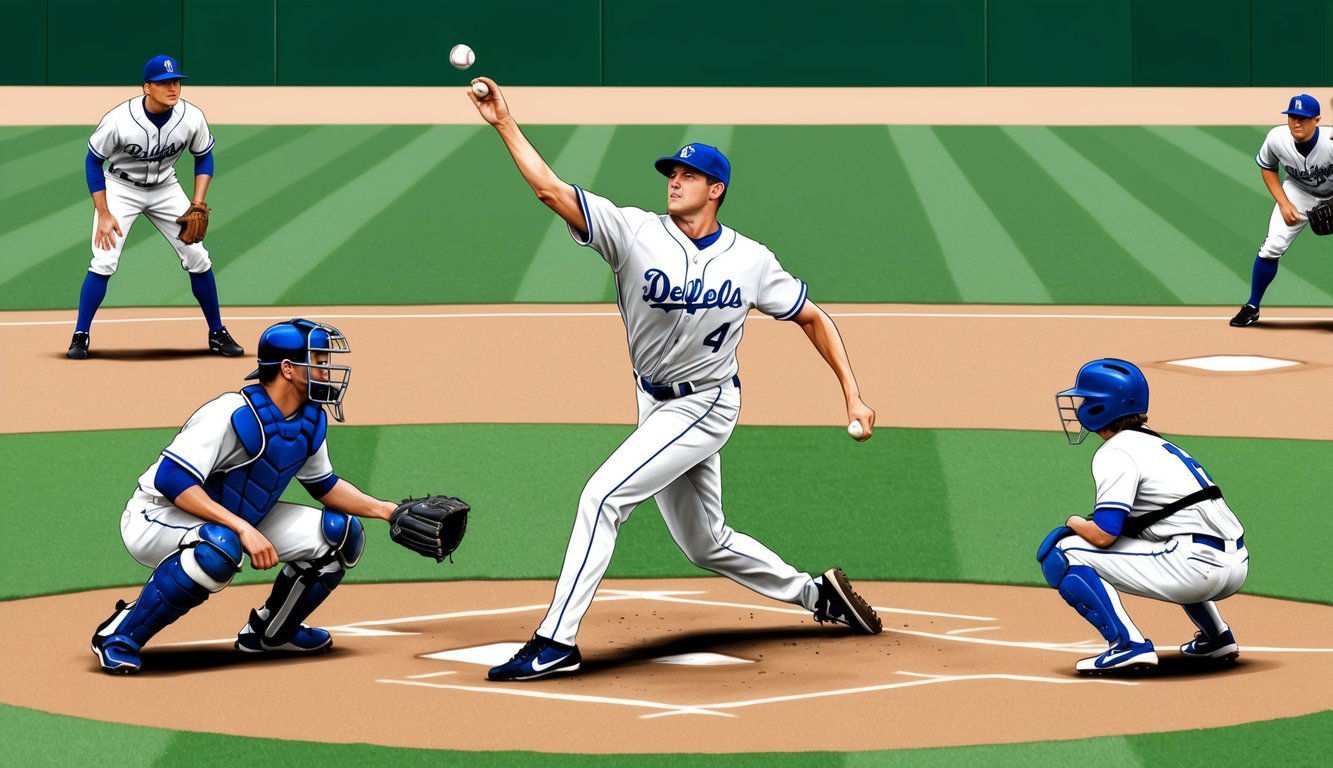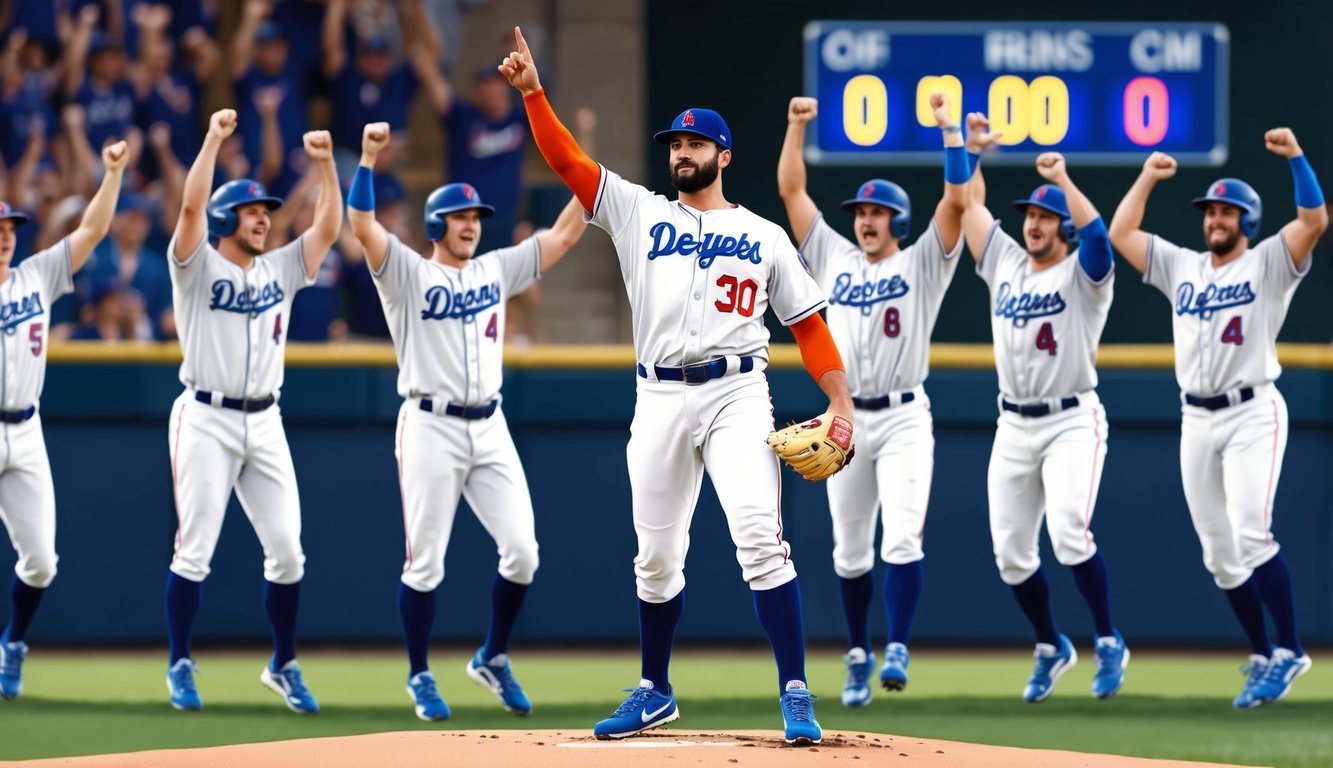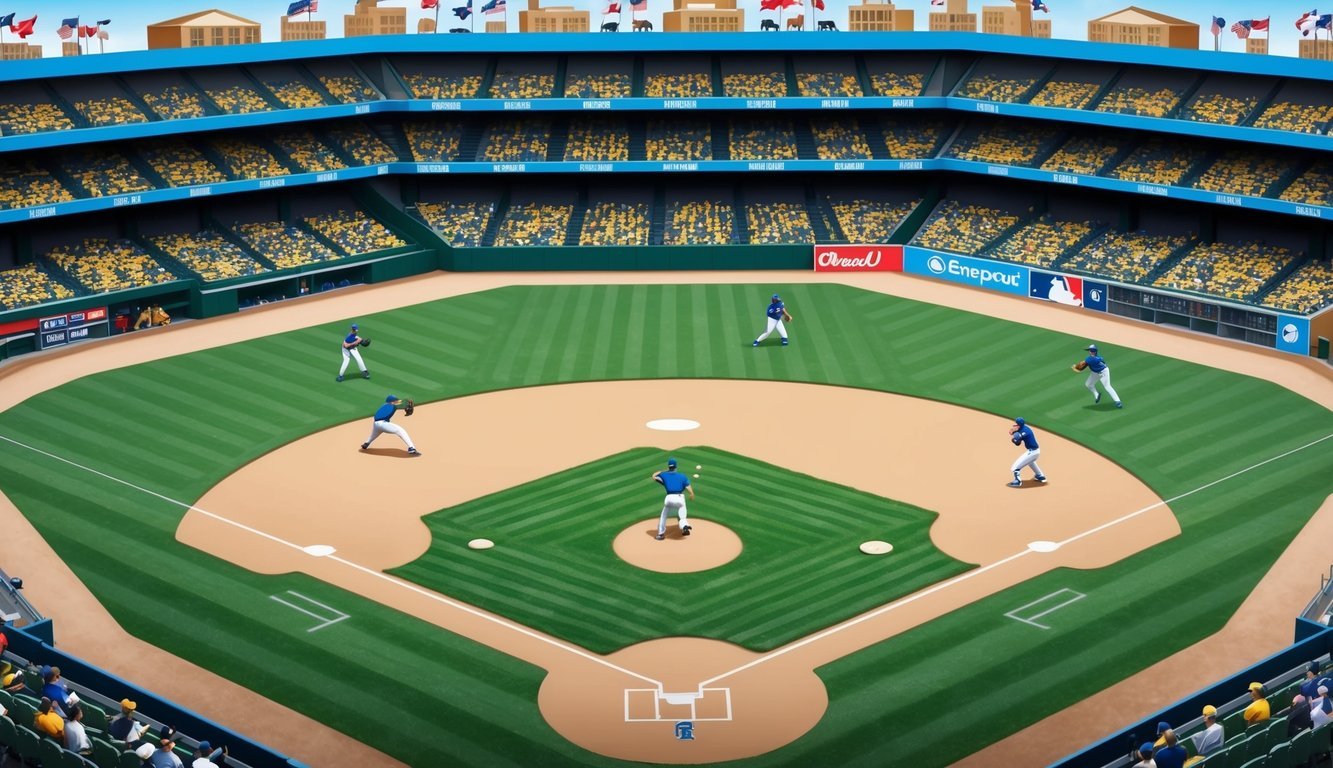Baseball fans often marvel at pitchers who can go the distance.
A complete game in baseball showcases a pitcher’s endurance and skill.
A single pitcher throws for their entire team throughout the game, from the first pitch to the final out.
This impressive feat demonstrates mastery over opposing batters and helps preserve the bullpen.
Complete games were once common in professional baseball.
Today, they’re rare gems that excite crowds and earn respect from teammates.
Pitchers who achieve this milestone display exceptional control, stamina, and strategy.
They must navigate through the batting order multiple times while maintaining effectiveness.
The number of innings in a complete game can vary.
In standard games, it’s typically nine innings.
However, shorter games due to weather or other factors may still count as complete if the pitcher throws the entire contest.
This flexibility adds intrigue to the statistic, making each complete game a unique accomplishment in the world of baseball.
Understanding the Complete Game
A complete game showcases a pitcher’s endurance and skill.
It represents a significant achievement in baseball, though its frequency has changed over time.
Definition and Basics
A complete game occurs when a starting pitcher throws the entire game for their team.
This typically means pitching all nine innings in a standard game.
However, if a game is shortened due to weather or goes into extra innings, it still counts as a complete game if the starting pitcher remains on the mound throughout.
Complete games demonstrate a pitcher’s stamina and effectiveness.
They often correlate with strong pitching performances, as managers are more likely to keep a pitcher in if they’re doing well.
Pitch count plays a role too – pitchers with efficient outings are more likely to go the distance.
Complete Game vs. Other Pitching Outcomes
A complete game differs from other pitching outcomes in several ways.
Unlike a win, which requires run support from the offense, a pitcher can throw a complete game in a losing effort.
It’s possible to pitch a complete game without recording a shutout or no-hitter.
Complete games are rarer than quality starts, which only require six innings pitched.
They’re more common than perfect games or no-hitters, which have additional stringent requirements beyond just pitching a full game.
Historical Context and Evolution
Complete games were once much more common in baseball.
In the early days of the sport, starting pitchers were expected to finish what they started.
As the game evolved, specialized relief pitchers became more prevalent.
Today, complete games are relatively rare.
Factors like pitch count limits, increased focus on bullpen usage, and concerns about pitcher health have contributed to their decline.
In the modern era, throwing even a handful of complete games in a season is considered noteworthy.
Despite their rarity, complete games remain a respected achievement.
They highlight a pitcher’s ability to maintain effectiveness throughout an entire game, a valuable skill in baseball.
Role of the Pitcher in Baseball

Pitchers are the backbone of a baseball team’s defense.
They control the game’s pace and have a significant impact on the outcome through their strategic pitch selections and ability to outwit batters.
Starting Pitcher Responsibilities
Starting pitchers aim to throw as many innings as possible while keeping runs to a minimum.
They typically have a diverse arsenal of pitches, including fastballs, curveballs, and changeups.
These pitchers must maintain their stamina throughout the game.
To succeed, starting pitchers must develop precise mechanics and effective strategies for facing opposing hitters.
Young athletes often study how to throw a baseball with proper grip and technique to improve their control and velocity.
By mastering these fundamentals, pitchers can keep hitters off balance and extend their effectiveness deep into games.
Starting pitchers work closely with catchers to develop game plans for each batter.
They need to be aware of pitch counts, as managers often limit them to protect their arms from overuse.
Fielding is another crucial aspect of a starting pitcher’s role.
They must be ready to field bunts and participate in defensive plays when needed.
Relief Pitchers and Bullpen Strategy
Relief pitchers come into the game after the starter and play a vital role in late-game situations.
The bullpen houses these specialists, each with unique strengths.
Closers typically pitch the ninth inning to secure wins.
Set-up men handle the seventh and eighth innings.
Middle relievers bridge the gap between starters and late-inning specialists.
Managers strategically use relief pitchers based on matchups, game situations, and pitcher availability.
Left-handed specialists often face tough left-handed batters in critical moments.
Bullpen management is crucial for long-term team success.
Coaches must balance using their best relievers with keeping them fresh for future games.
Significance and Rarity of Complete Games

Complete games in baseball have become increasingly rare, reflecting major shifts in pitching strategy and player management.
This trend has elevated the significance of complete games, making them noteworthy achievements in modern baseball.
Statistics and Records
Cy Young holds the all-time record with 749 complete games, a number that seems unattainable today.
Pud Galvin and Tony Mullane follow with 646 and 468 complete games respectively.
These 19th-century pitchers played in an era when complete games were the norm.
In the 20th century, complete games gradually declined.
The 1950s saw an average of 35% of games completed by starting pitchers.
By 2000, this number dropped to 5%.
In 2019, only 45 complete games were recorded across all of Major League Baseball.
Modern pitchers rarely reach double-digit complete games in a season.
The last pitcher to record 10 or more complete games in a year was James Shields in 2011 with 11.
Shift in Baseball Strategy
The rarity of complete games stems from changes in baseball strategy.
Teams now prioritize pitcher health and specialized roles.
Managers closely monitor pitch counts to prevent injuries and preserve arms for long seasons.
Relief pitchers have become more important.
Bullpens are stocked with hard-throwing specialists who can dominate for short stints.
This strategy often proves more effective than leaving a tiring starter in the game.
Sabermetricians have shown that pitchers typically become less effective as they face batters multiple times in a game.
This insight has led to earlier hooks for starting pitchers, even when performing well.
The value placed on complete games has shifted.
While still respected, they’re no longer seen as essential measures of a pitcher’s worth or durability.
Factors Influencing a Complete Game

Pitchers face several key challenges when aiming for a complete game.
Their physical condition, the team’s strategy, and the game situation all play crucial roles in determining whether a pitcher can go the distance.
Importance of Endurance and Rest
Endurance is vital for pitchers seeking complete games.
A strong physical foundation allows them to maintain velocity and control throughout nine innings.
Proper rest between starts is equally important, giving arms time to recover.
Pitchers often follow specific training regimens to build stamina.
These may include long-distance running, weightlifting, and targeted exercises for shoulder and arm muscles.
Rest days between starts are carefully managed.
Most pitchers work on a five-day rotation, allowing ample recovery time.
Some teams use a six-man rotation to provide extra rest, especially during long stretches without off-days.
Risk Management and Injury Prevention
Teams carefully monitor pitch counts to protect their pitchers.
High pitch counts can increase injury risk, particularly for younger players.
Many managers set limits around 100-120 pitches per game.
They’ll often pull a pitcher who exceeds this threshold, even if they’re performing well.
Trainers and medical staff play a key role in assessing pitcher health.
They look for signs of fatigue or potential injury during games.
If any red flags appear, the pitcher is likely to be removed.
Some pitchers are more prone to injury due to their throwing mechanics or physical build.
Teams may be extra cautious with these players, limiting their chances at complete games.
Game Circumstances: Leads and Runs
The game situation heavily influences a pitcher’s chances of completing a game.
Large leads make managers more comfortable leaving a starter in longer.
Close games often lead to earlier bullpen use, as teams prioritize winning over individual achievements.
Managers may pull a starter to gain a favorable matchup against a key opposing batter.
Run support is crucial.
Pitchers who receive more runs are likelier to stay in games longer.
This reduces stress and allows them to pitch more aggressively.
In blowouts, teams might leave a starter in to preserve bullpen arms for future games.
However, they’ll still monitor pitch counts and fatigue levels closely.
Famous Complete Games and Record Holders
Complete games have produced some of baseball’s most iconic moments and legendary performances.
From perfect games to marathon outings, these feats showcase pitching excellence and endurance.
Memorable Performances in MLB History
Nolan Ryan threw an incredible 61 complete games in which he allowed no runs, known as shutouts.
His 1974 performance against the Minnesota Twins stands out, where he struck out 15 batters in a 4-0 victory.
Don Larsen etched his name in history with the only perfect game in World Series play.
On October 8, 1956, he retired all 27 Brooklyn Dodgers batters for the New York Yankees.
Harvey Haddix’s 12 perfect innings in 1959 is often called the best game ever pitched.
Sadly, he lost in the 13th inning when his Pittsburgh Pirates failed to score.
All-Time Greats and Career Milestones
Cy Young holds the unbreakable record of 749 career complete games.
He pitched in an era when starters were expected to finish what they started.
Walter Johnson, known as “The Big Train,” racked up 531 complete games in his career.
He led the American League in complete games five times.
In the modern era, Roy Halladay stood out with 67 complete games.
His 2010 perfect game against the Florida Marlins was a masterclass in pitching efficiency.
Greg Maddux, despite playing in an age of specialized bullpens, managed 109 complete games.
His precise control and quick work on the mound allowed him to go the distance frequently.
